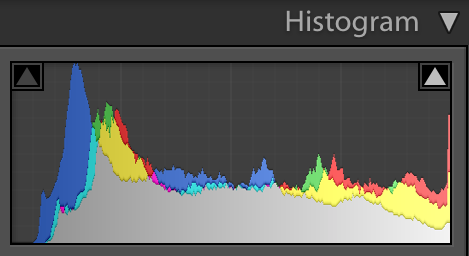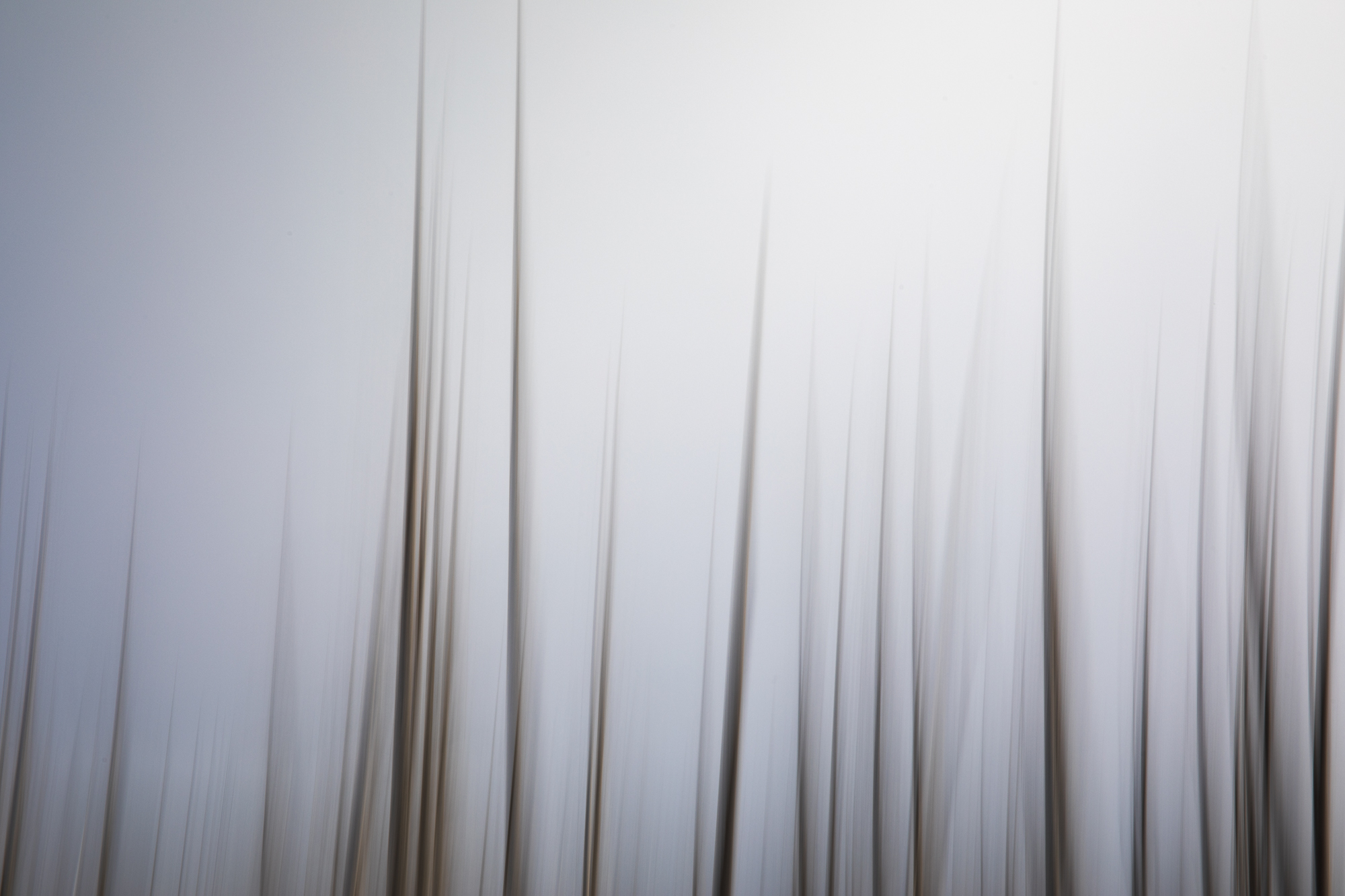I tried a slightly different approach to bobby socks trees in Yellowstone. I’ve always loved this stand and how symmetrical they are. The temps weren’t cold enough for fog this morning, so I used a motion blur technique to soften the image a bit.
Winter in Yellowstone - Intro
Winter in the Greater Yellowstone marries serene beauty and harsh realities in a way only an arctic like cold can. On some days you may be excused for mistakenly thinking you were located in the polar zone. Last January on my photography worksop we spent a day in the field with low temps reaching -40° F (40° C). Severe cold, blustering winds, and limited food resources present supreme challenges for wildlife to overcome. Nothing has kindled a deeper sense of respect for the fortitude and adaptability the inhabitants of this ecosystem posses than my time photographing them in the winter. The next series of posts over the coming days will highlight individual animals and their unique strategies for surviving, and even thriving in the gauntlet of winter.
Cultivate Your Vision
You may be asking: “Why would I look at paintings to improve my photography? Wouldn’t I be better off drawing inspiration from other photography?”
Yes, drawing inspiration from photography is important, but not at first. Photography is too easy to copy without much thought. The value in drawing inspiration from a different medium is that it is not immediately replicable. Much thought is required to incorporate elements from a meaningful painting into your own photography. The process forces you to be creative.
Remember, we want to be creative, not merely emulative. I could spend all my time giving you technical advice, camera settings and photoshop tips (all of which we will get to), but it would be in vain without first cultivating your own creative vision and artistic eye.
I mentioned earlier that my time in the Wildlife Art Museum challenged me on a fundamental level. Few, if any of my photographs evoked emotion, told a story, or conveyed a mood like these great paintings. Sure, there are obvious differences between photography and paintings. One of which is that the painter has total control of the elements and creates art from a blank canvas, while the photographer is often reacting to the elements unfolding before them. Truly, what the painters envision they create. As photographers we don’t always have this ability, at least not fully.
But rather than allowing that to become an excuse, I let it be a challenge.
What if I envisioned the scene I wanted beforehand and then went after it?
What if I poured my time into making a couple images of wildlife on a dramatic landscape that told the story of where they lived and evoked a mood?
What if my approach to photography was proactive, not merely reactive?
What if, accepting I may not have control over all the elements as a painter, I use research and knowledge of my subject and setting to reduce as many variables as possible and so increase the chances of making a truly remarkable image?
These were just a few of the take-aways from my time in the museum, and in the weeks that followed these thoughts produced some of my best work.
Feeling Stagnant in your Photography?
Now is an exciting time to be photographer because it is so accessible, but it’s also harder than ever to stand out. Why?
I see 2 reasons:
- The obvious…there are more photographers now than ever before. Whether your photography is professional or recreational this can be daunting…how can your work stand out amongst so many others?
- Most photography is emulative, not Creative. Look around, the vast majority of photography you see looks the same. We see a beautiful image and want to copy it. How many photos have you seen of the same waterfall in Iceland? Getting inspiration from other’s work is good, but we need to bring our own vision to bear in our work. We will touch more on this in the near future.
If you are reading this, then chances are that photography is your creative outlet. I want to help you develop your own style as a photographer, whether professional or hobbyist, by sharing what I’ve learned in my career. But be forewarned, this process may require you to forget everything you ever thought you knew about photography.
Are you ready? Lets begin…
A pivotal moment in my photography came years ago when a mentor of mine and fellow photographer suggested we walk through the world-renowned National Museum of Wildlife Art here in Jackson Hole. I had visited the museum before and enjoyed it, but this time he suggested we approach it differently. I was getting bored with my photography. For years I had drawn inspiration from other more experienced photographers and my aim, whether I realized it or not, was to develop my own collection of images that could stand up next to theirs and be virtually indistinguishable. With time I developed the portfolio I dreamed of…and I was bored with it. I slowly began to realize that by copying others photography I had stifled my own creativity.
Here is what I want you to do:
1) Take some time to look at famous paintings. Click here to view a compilation of paintings online. Of course, if you have access to a museum or gallery, then do that.
Forget everything you thought you knew about photography and allow your assumptions to be challenged asking these questions:
How does the painting guide the viewers eye thorough the scene to the subject?
How does the artist utilize light and shadows? Composition? Space? Detail?
What is the perspective? Is the viewer looking down on, or up at the subject?
2) Tell me about your experience. What stuck out to you regarding the questions above? How were you challenged? You can tell me over email.
How to photograph the sun without permanent eye damage
- Snake River Fog -
One of the first rules people learn in photography, to which they have unwavering fidelity, is always to photograph with the sun at your back. While this a helpful concept in the beginning, the rule, like most "rules" in photography must be broken in order to advance your work beyond the standard family vacation portrait. What sets an experienced photographer apart is not that he/she simply breaks the rules of light, the rule of thirds, etc, but that they have discernment to recognize the situation in which breaking the norms will transform a photograph into a piece of art. Experimenting with frontal light, side light, and back light is an essential step in taking your photography to the next level.
In the case of the image here, I was not simply photographing towards the sun (backlight), but also the sun itself. Properly utilized, this approach can create a dynamic and captivating image. Poorly used, this technique will not only ruin your image, but also your eyesight and thereby future in photography. Here are a few things to consider when including the sun in your photography:
- It can't be the whole sun. I find this really only works in scenarios where the sun is at a low angle (sunrise or sunset) and is partially obscured. My favorite circumstances for this are fog and clouds. In the image above the rising sun was breaking through a fog layer on the bank of the Snake River.
- Underexpose the Image. If you've spent much time dabbling in landscape photography you will have inevitably heard the phrase "always preserve the highlights." This is true...for the most part. Essentially, this means that you always want to expose your image for the brightest part of the scene so that you don't blow out the highlights. However, when you are including the sun itself in the image there will be an inevitable hotspot the blows out the right side of your histogram (as seen below). In this instance I am not concerned with containing all the highlights, but rather I am focused on how large I want that bright spot to be. In this scene I wanted the hotspot to take up roughly a third of the sky. This required me to underexpose the image 2.5 stops.







